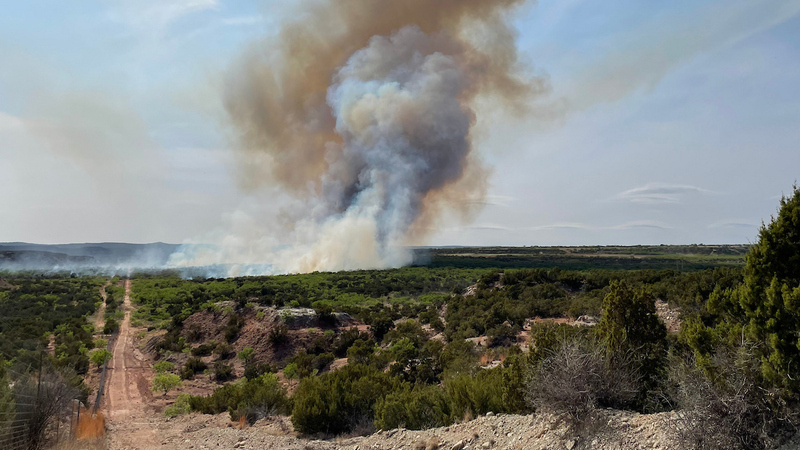Fire danger product
We have two National Fire Danger Rating System Fire Danger products available for use in daily broadcasts. They are published in Google Earth KMZ format and updated every day at 5 p.m. The products are updated every 2 hours from 5 p.m. until 1 a.m. to account for any delays in data availability.
The Observed Fire Danger product reflects conditions observed at 1 p.m. during the current day. The Forecast Fire Danger product is a forecast of conditions at 1 p.m. the following day. Each file contains an internal timestamp with the effective date.
All fire danger products share the same legend with five fire danger levels ranging from low to extreme.
The RGB values for each category are:
Low: 3,192, 60
Moderate: 0,182,253
High: 255, 250, 165
Very High: 253, 154, 111
Extreme: 255, 0, 0
Burn ban
The burn ban product is updated as needed when counties issue or lift burn bans. When a burn ban is issued, the county will become red. If no burn ban is in place, only the county boundary is visible.
We ask that you give credit on the graphic by including our logo. Our primary white logo with transparent background is available here in multiple formats although the png format is recommended.
If you’re interested in additional products or your software requires a different format than KMZ, please contact us at [email protected] so that we may help you find a workable solution.
Southern Plains Wildfire Outbreak
National Weather Service meteorologists and Texas A&M Forest Service Predictive Services staff have identified the elements of an extremely dangerous fire weather phenomena known as a Southern Plains Wildfire Outbreaks (SPWO). An SPWO is a true force of nature. Much like a hurricane or tornado, you can’t stop it. For photos and videos of SPWO wildfires, click here.
